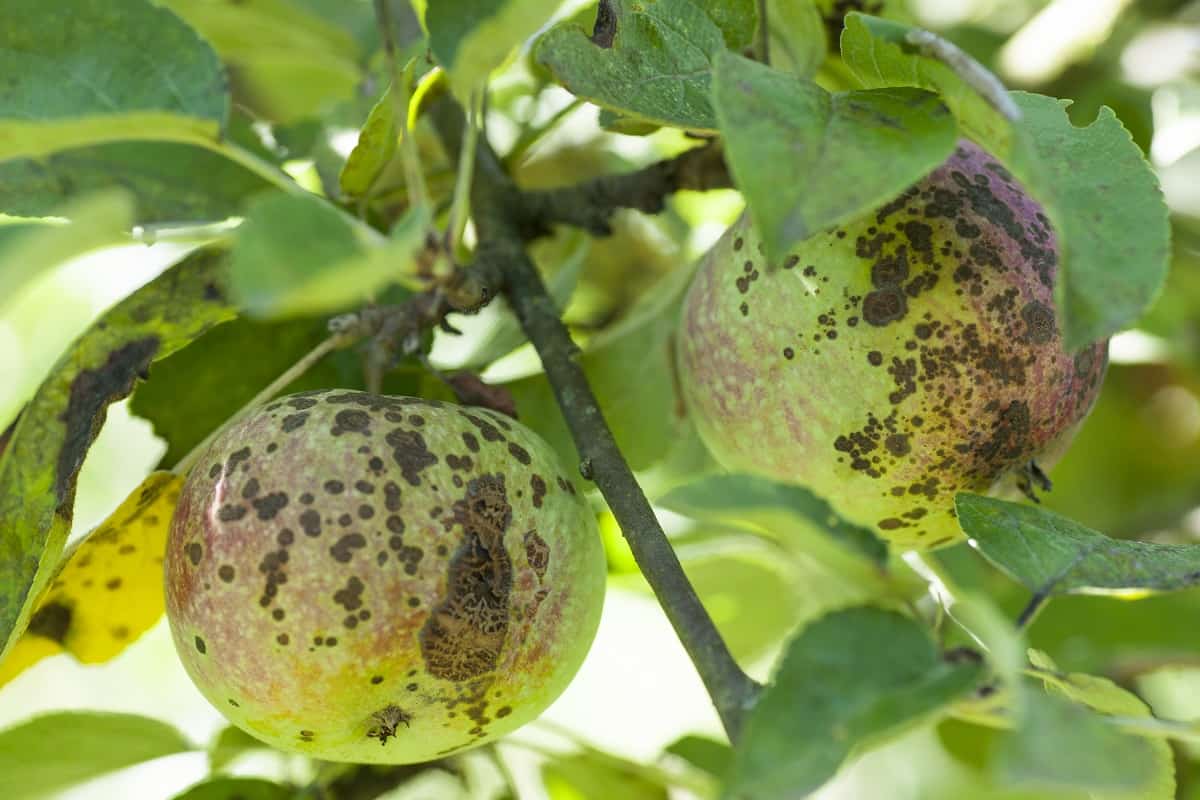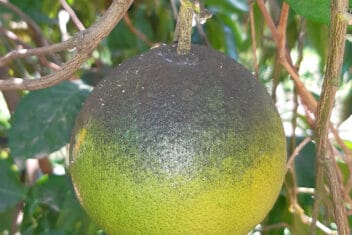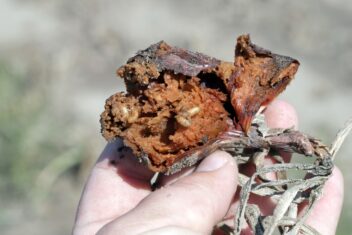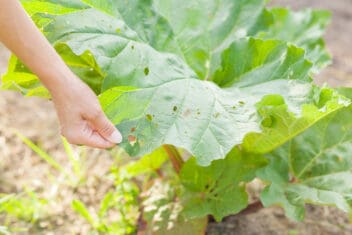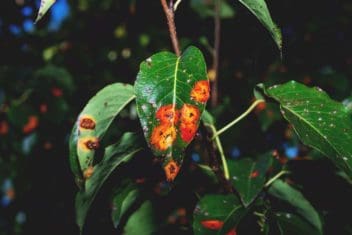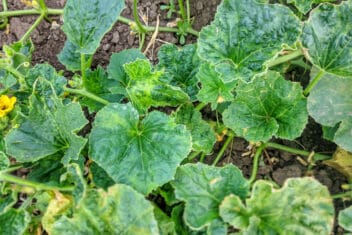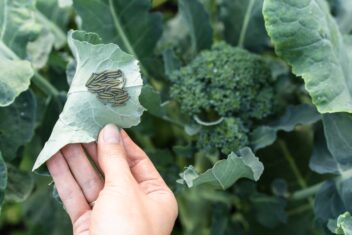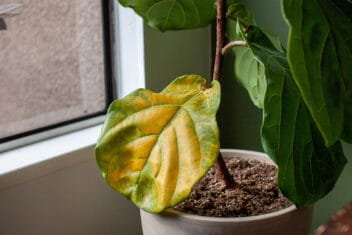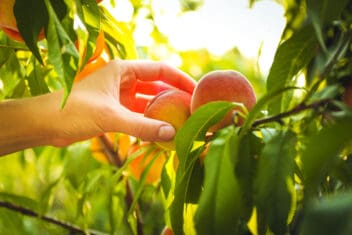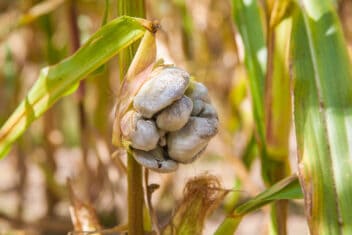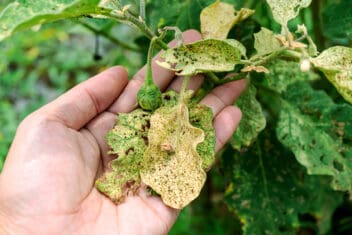We all know that apples are the quintessential fall fruit – and while they are easy to grow, they are not without their fair share of problems.
Among these problems are diseases, some of which can be fatal. If you’re looking to keep your trees healthy and productive, watch out for these 8 most common apple tree diseases.
8 Most Common Apple Tree Diseases
Apple trees are vulnerable to many diseases including fire blight, scab, rusts, and more. These apple tree diseases can be difficult to identify since they all have different symptoms.
The best way to know what you’re dealing with is by visiting a local orchard or nursery where experts can take samples and diagnose your tree’s problem for you. However, it can also help to know for yourself some signs and symptoms of the most common diseases.
Here are the ones to watch out for.
1. Sooty Blotch and FlySpeck
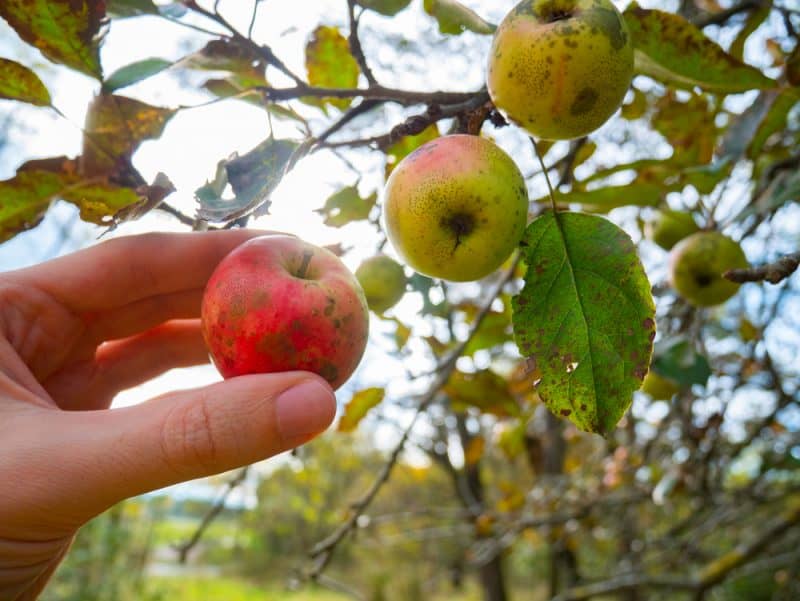
Although sooty blotch and flyspeck are technically two diseases (with several types of organisms occurring together as a disease complex), the two issues always appear together. Symptoms first appear in the late summer or early fall, unfortunately just as your apples are about ready for harvest.
To get rid of this disease, you will need to prune heavily and thin your plants. It is more common in moderate temperatures with high humidity. The good news about sooty blotch and flyspeck, which causes dark black blotches that look like soot along with individual flecks that look like flies, is that it is purely cosmetic. It won’t affect the way your fruits taste.
It can, however, reduce their shelf life – something to consider if you plan on keeping your apples in storage for long periods of time.
2. Bitter Rot
Bitter rot is an apple disease that causes large, unattractive lesions that extend in concentric circles all the way to the core of the fruit.
It is most common in the summer when conditions are warm and wet. You may notice a sour smell emanating from the rotten spots. Good sanitation is essential for controlling this disease, but once it has set in, the only way to get rid of it (and prevent it from spreading to other plants) is to remove diseased fruits.
3. Fire Blight
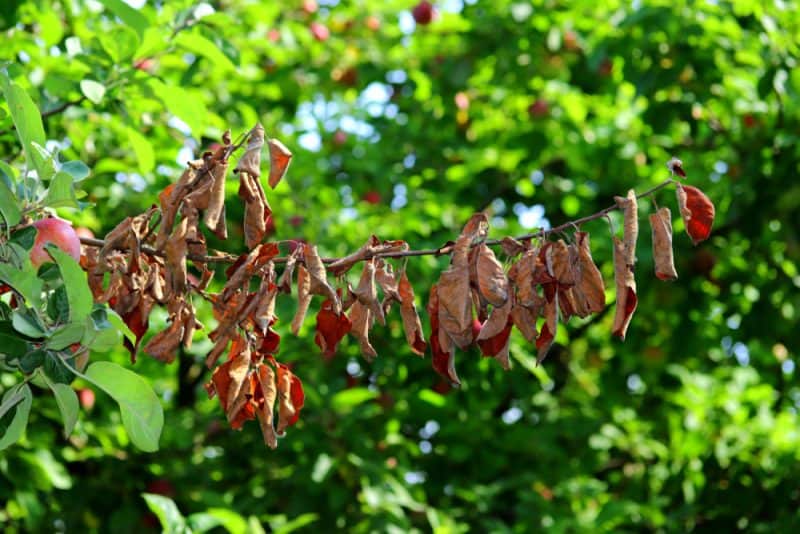
Fire blight is one of the few bacterial diseases that commonly affect apple trees (many are fungal). This disease causes branches to die back and develop cankers and can also cause foliage to wither and die.
Caused by Erwinia amylovora, this bacterial disease is most common in plant tissues that are fresh and young. Avoid excessively fertilizing with nitrogen and don’t prune after or during the blossom period. That’s because this is when insects are most likely to feed and these feeding activities can spread disease.
If you notice any tissue that is “blighted,” remove it promptly. Between cuts, while pruning, disinfect your tools with bleach.
4. Black Rot
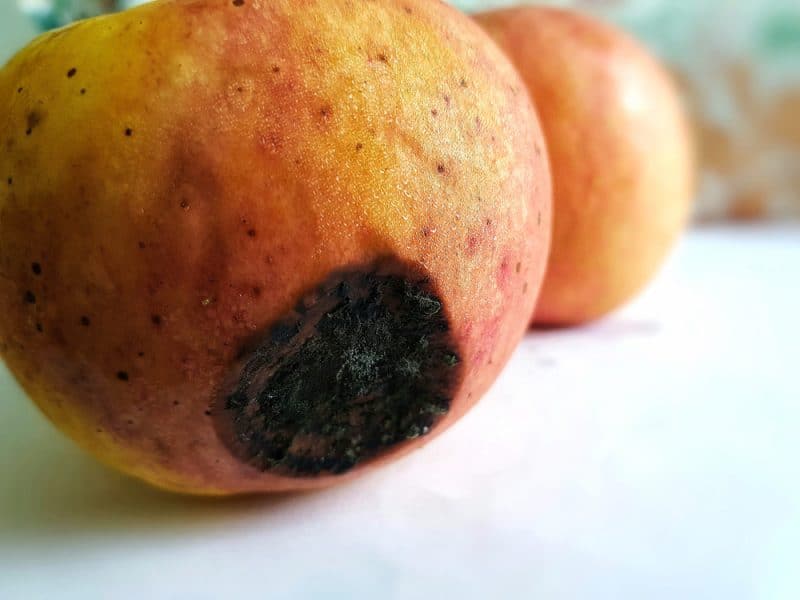
As with bitter rot, black rot appears as brown, bruised-looking lesions. However, these start on the calyx end of the fruit (at the bottom).
This can occur on both pears and apples and is most common in the southeastern US. It can also cause symptoms on the leaves, where “frogeye” spots occur. Prune any dead wood and remove debris that might be lying around.
5. Cedar Apple Rust
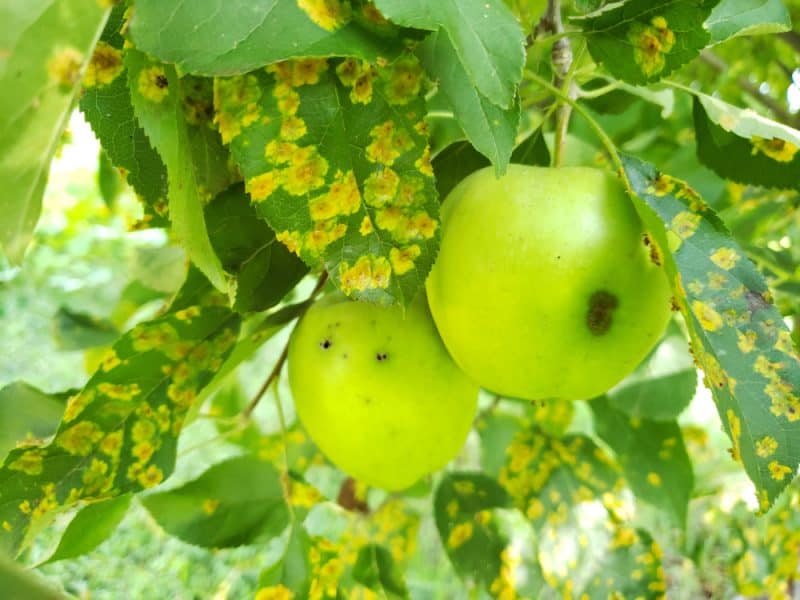
As the name implies, cedar apple rust causes rust-like lesions on leaves that are pretty easy to identify. Unfortunately, cedar apple rust can cause the entire defoliation of a tree.
To prevent this disease, caused by the pathogen Gymnosporangium juniperi-virginianae, you will have to plant resistant varieties (some good options are Red Delicious, Arkansas Black, McIntosh, and Spartan). Remove infestations from nearby cedar trees if you notice the problem, as this disease requires both cedar and apple trees to reproduce.
Of course, if you have the choice, don’t plant apple trees near cedars to begin with. This pathogen needs hosts of both species to replicate.
6. White Rot
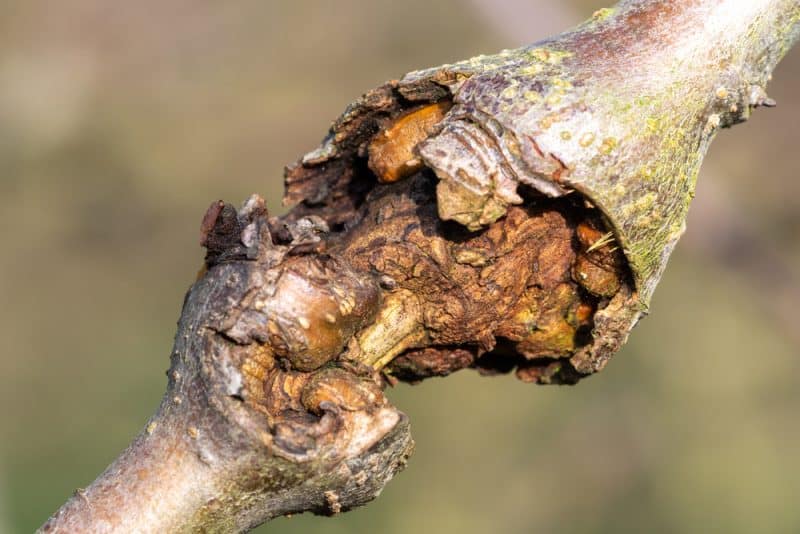
White rot is often thought of as a disease that primarily affects garlic and onions (as well as other plants in the allium family) but it can also go after apples.
Referred to as “Bot Rot,” or Botryosphaeria rot, this disease is caused by a fungus. It can create severe cankers on limbs and other woody bits of the tree. It’s most severe in trees that have already been weakened by factors like winter weather, drought, sunscald, improper pruning, poor nutrition, and disease.
Some apple types are less likely to be affected by white rot, such as Red Delicious and Jonathan. However, certain types are more susceptible, including Yellow Transparent, Galila Beauty, Rome, and Golden Delicious.
Ensuring proper sanitation is the easiest way to prevent white rot and get it under control. Remove any piles of prunings that are left around and prune trees to remove their cankers. You can use fungicide but it isn’t always effective, particularly when trees have progressed to more severe canker phases.
7. Powdery Mildew
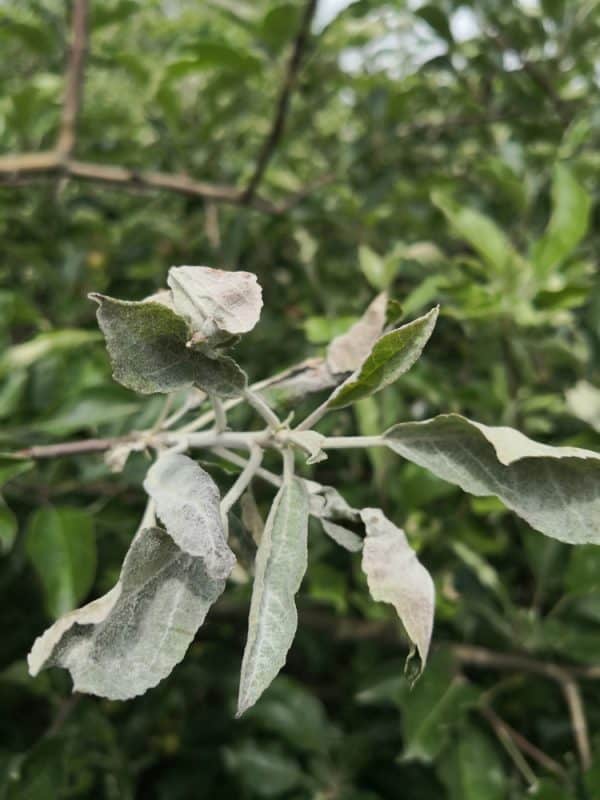
Unless you are brand new to gardening, powdery mildew is a disease that you’ve likely heard much about. The disease is a fungus that first appears in the spring as a delay in the opening of infected blossoms.
Later, you might notice that the buds are covered with a white or light gray powder – these are the fungal spores. You’ll find that flowers fail to develop normally and produce little to no fruit.
The good news is that powdery mildew rarely kills an apple tree. The bad news is that it’s caused by warm temperatures and high relative humidity. You will probably need to use a fungicide to get rid of this problem, since it’s practically impossible to control the temperature and humidity.
8. Apple Scab
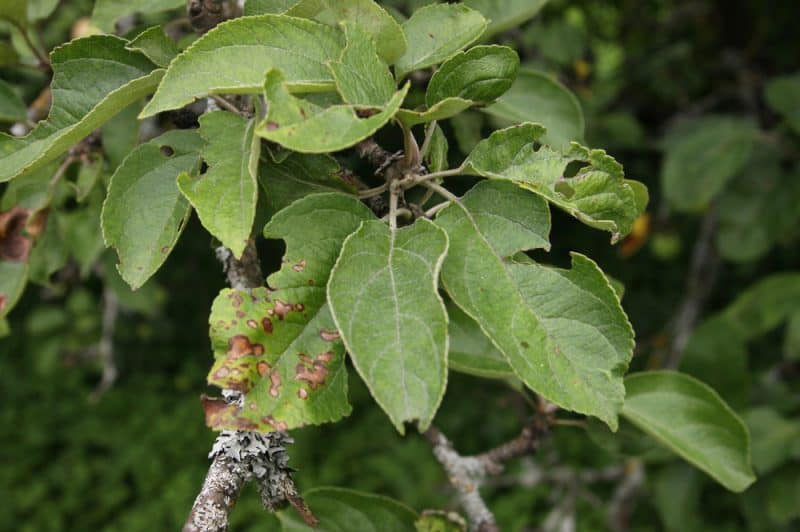
Apple scab is a disease caused by a sac fungus known as Venturia inaequalis – it sounds just as unpleasant as it actually is. This fungus is endemic to central Asia but is now found just about everywhere in the world in which apples are grown.
It can affect many kinds of plants but is most common on apple trees – even on wild crab-apples.
The good news about apple scab is that it rarely kills a tree outright, but it can weaken them so much that it makes them more likely to develop other diseases.
Not only can it cause leaves to drop prematurely, but it can also cause trees to develop fruits that are not fit for human consumption.
It spreads more readily in wet weather, like most fungal diseases. Therefore, proper environmental controls like adequate spacing between trees (and cleaning up plant matter and debris around your trees) can help prevent this problem. Once an apple scab has reared its ugly head, you can often control it by applying fungicide and pruning heavily to increase sun and air exposure.
Of course, there are many apple scab-resistant cultivars you can grow, too.
What Does a Sick Apple Tree Look Like?
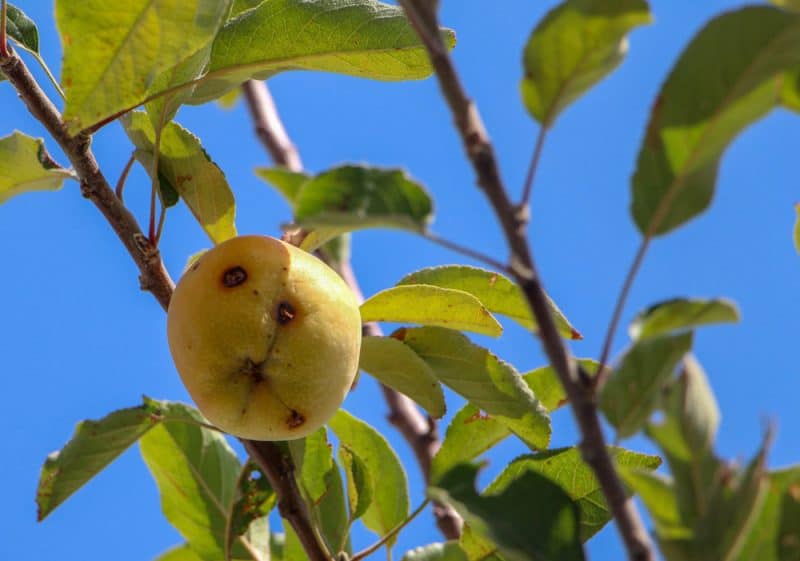
If you’re new to growing apple trees, you might be unsure about whether the symptoms your trees are displaying are abnormal – or just a typical phase of their growth.
Generally, any kind of leaf drop or discoloration is a sign that something is amiss. The presence of lesions on leaves or cankers on woody growth are also signals that your tree might be sick.
Of course, you may also have fruits that rot before they are mature.
Some of these symptoms of diseases can also be signs of insect infestation, so it’s always worth ruling out an insect pest before you apply disease treatments.
Keep Your Apple Trees Healthy: Basic Preventative Tips
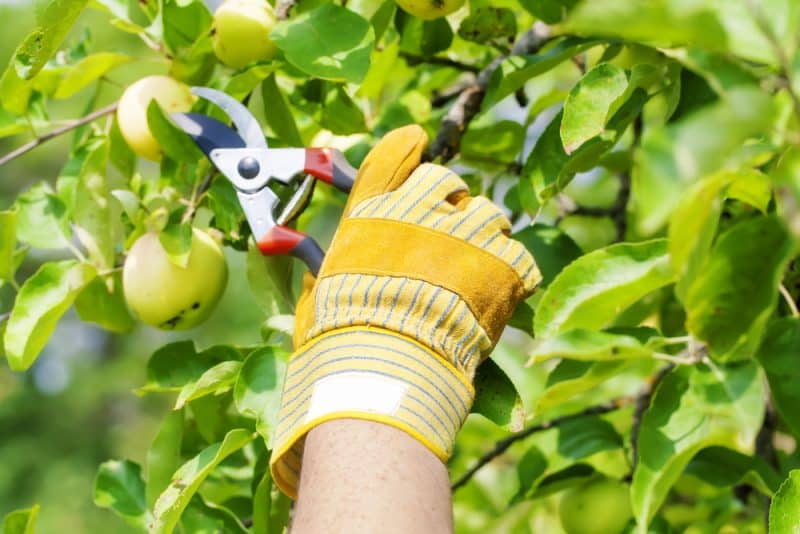
The good news about common apple tree diseases is that most are purely cosmetic. If you aren’t planning on selling your fruits, you can often still use them for things like jams, jellies, and baking.
However, keeping your apple trees healthy by following basic preventative tips is always the best way to prevent disease. Use regular applications of fertilizer and be sure to prune. Proper spacing and keeping the area around your apple trees clean and free from debris is another great way to ensure success.
The apple tree is one of the most popular trees in North America. To make sure your tree can grow and thrive, it’s important to watch for common diseases that commonly affect apple trees. By knowing what to look for and implementing the preventative tips listed above, you can keep your orchard healthy and productive.
